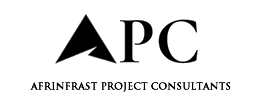
The Department for Transport has chosen the more expensive proposal for a third runway at Heathrow Airport, selecting the airport’s own £33bn plan over the Arora Group, which was expected to cost slightly over £25bn
Heathrow Airport Limited (HAL) and Arora Group’s Heathrow West Limited (HWL) have been competing for the lucrative third runway expansion plans contract since the summer, when HWL announced their slightly cheaper(but smaller in scale) plans.
Heathrow versus Arora
The question of building around the M25 has long plagued plans to expand Heathrow with a third runway northwest of the airport. HWL’s plans largely avoided extensive works through shortening the length of the new runway and using an ‘outside-in’ phasing approach, which would reduce the footprint of construction works over time. This was estimated to cost under £25bn, though the plans did not include the redevelopment of the airport’s existing central area.
HAL’s £33bn proposal will realign the motorway underneath the new runway, at a cost of £1.5bn. The plans include an additional £12bn of associated terminal infrastructure, as well as the £21bn for the actual runway construction. The airport also intends £15bn of investment into existing airport facilities for upgrades and modernisation, which will go ahead regardless of the final planning decision on a third runway. These works will make an estimated total of £33bn.
This proposal will influence the review of the Airports National Policy Statement (ANPS) framework, where the planning decision on expansion at the airport will be made. The government is now expecting an application for development consent next year.
Heathrow have released a video explaining the scope of the M25 works
Transport secretary Heidi Alexander said on the decision:
“Following a comparative assessment of the remaining proposals for Heathrow expansion, the government’s view is that the northwest runway scheme brought forward by Heathrow Airport Limited offers the most credible and deliverable option, principally due to the relative maturity of its proposal, the comparative level of confidence in the feasibility and resilience of its surface access plans and the stronger comfort it provides in relation to the efficient, resilient and sustainable operations of the airport over the long-term.
“The HAL scheme is considered comparatively more mature in its approach to road infrastructure. While the HAL scheme requires major works to the M25, assessment indicates that the HWL scheme would also have a considerable impact on the M25.
“We know we must provide as much clarity and certainty for communities affected by expansion at Heathrow as soon as possible. While HAL’s scheme requires more land, it would require the acquisition of fewer residential properties around the airport than HWL’s scheme.
“The runway length proposed by HAL – up to 3.5km – is considered to be advantageous in terms of providing greater resilience and potential futureproofing for next-generation aircraft when compared with the 2.8km runway proposed by HWL.
“The government therefore considers that overall, the HAL scheme provides the greatest likelihood of meeting our ambition for a decision on development consent application within this Parliament. This scheme will now inform the ongoing ANPS review. Any scheme identified in an amended ANPS will still need detailed consideration (including matters such as runway length, layout and supporting infrastructure) in any development consent order sought under planning legislation.”
A Heathrow Airport statement said: “The government’s announcement is a positive step, but we need further clarity on planning and frameworks from government and our regulator. Once this is confirmed, we are ready to start investing billions of pounds in our supply chain across the country. It has never been more important or urgent to expand Heathrow, the UK’s hub airport; it is time to clear the way for take-off.”
The post [VIDEO] Heathrow’s third runway plan wins out over Arora appeared first on Planning, Building & Construction Today.

![[VIDEO] Heathrow’s third runway plan wins out over Arora](https://afrinfrast.co.ke/wp-content/uploads/2022/03/12175.jpg)